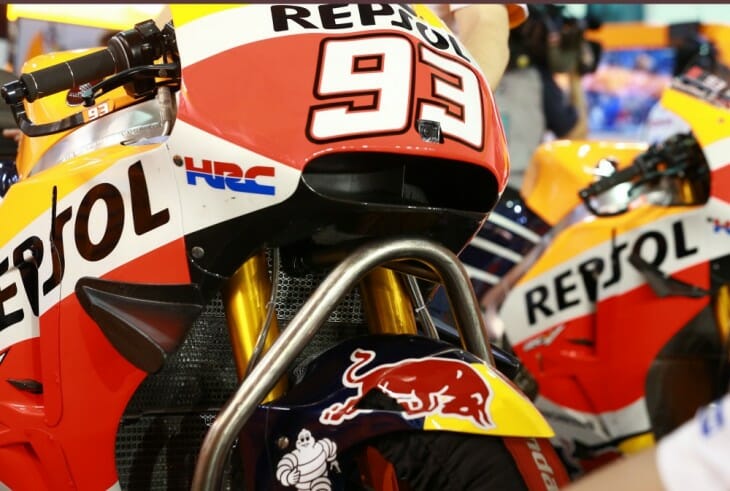MotoGP: Looking Into The Honda RC213V
Michael Scott | April 10, 2016

After rumors and speculation reported from the opening Qatar round, and in spite of tight secrecy, it is now common cause in the paddock that the 2016 Honda RC213V is something of a mirror image of last year’s 90-degree V4, with the crankshaft now spinning in the opposite direction.
This brings them in line with Yamaha, Ducati and Suzuki. Honda had already followed Ducati’s lead in widening the V-angle to a balance-perfect 90 degrees.
Among other gyroscopic advantages, this means that the torque reaction while the crank is accelerating tends to pitch the bike forward – helpful in resisting wheelies. Conversely, a decelerating crank will lighten the front wheel during braking and corner entry.
Another down side is that the extra idler gear required in the primary drive train saps a small but noticeable amount of power.
Marquez covertly acknowledged the change when he spoke of a change of character. In hard-braking corner entry, he told pressmen, “you must use more a Yamaha style – go in more wide and prepare the exit.” The bike was now slower in changing direction, but more stable, so “you can keep the speed more”.
Rather puzzlingly, however, he had pre-race spoken of lacking acceleration compared with the other bikes. This may be more a function of the RCV’s notoriously abrupt throttle response combined with difficulty in fine-tuning the new control electronic software. “The grip is not so bad but when the bike is pushing it is not fast enough, it’s like … stopping, especially in fourth, fifth and sixth. I can’t follow the other bikes.”
But he acknowledged that horsepower and speed had always been a priority for HRC, and was confident of a solution. “Honda is working; we have some new parts here.”